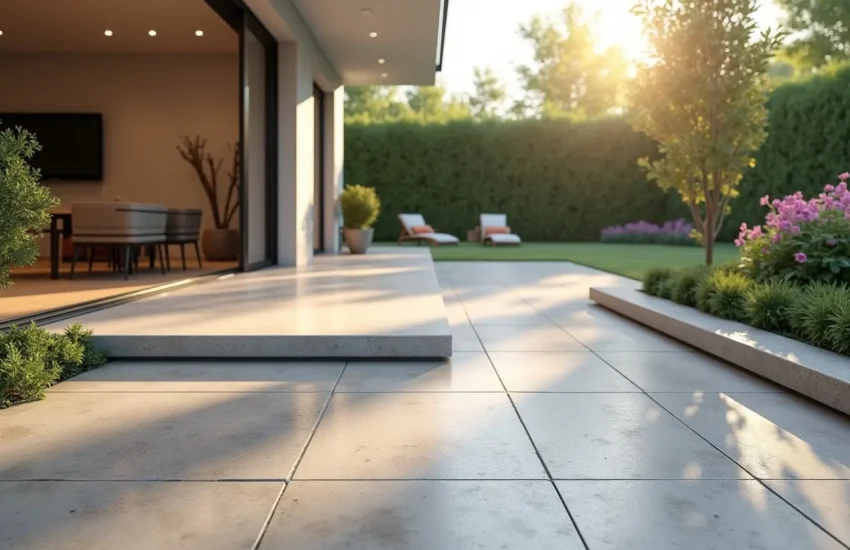
Enhance your home security effectively without exceeding your budget using practical strategies. Whether you have just moved into a place or you’ve lived there for decades, taking simple steps can offer a greater sense of safety. Many people assume you must pay large monthly fees for advanced systems, but cost-effective strategies can give you real peace of mind. Choosing effective upgrades that suit your budget can ensure you’re ready to deter potential threats while not draining your wallet.
It’s helpful to think about practical improvements both inside and outside your house. Security begins with how you lock your doors, light your yard, and maintain your windows. Making small changes can have a surprisingly big impact. Instead of merely installing expensive alarms, you can focus on the basics that support a safer environment. Below are several ways to protect your home using budget-friendly methods that can scale if you decide to add more advanced features in the future.
Contents
- 1 Evaluating Your Entry Points
- 2 DIY Security Measures And Helpful Practices
- 3 Cost-Effective Ways To Secure Windows And Doors
- 4 Smart Home Devices For Budget-Friendly Security
- 5 Budget-Friendly Home Security Tips For Outdoor Spaces
- 6 Ongoing Strategies For Peace Of Mind
- 7 Small Steps That Lead To Major Improvements
Evaluating Your Entry Points
Doors and windows often serve as the first line of defense against unwanted visitors. Ensuring that these areas are properly reinforced can reduce the likelihood of break-ins. A reliable deadbolt, for instance, can discourage many would-be intruders from attempting to force open a door. Even something as small as fresh window locks can make your property less appealing to trespassers.
Check for any loose screws or worn-out frames that could weaken your home’s defenses. If you discover damage, simple fixes like replacing the strike plate or using longer screws can increase stability. These efforts won’t cost a lot, yet they strengthen essential areas where thieves typically test for weak spots.
Strengthening Doors
Many older doors have thin, hollow cores that are easier to kick in. Switching to a solid wood or metal option might be a worthwhile investment. If you cannot replace the entire door, reinforcing it with a security bar or a stable door brace adds an extra layer of protection. These measures are usually affordable and require minimal effort to install.
Take a close look at your door’s surroundings, too. If there’s a window near your door handle, consider installing a break-resistant film. That way, criminals can’t simply smash the glass and unlock the door from the inside. Simple and creative tweaks like these show that you don’t need a huge budget to significantly improve home security.
DIY Security Measures And Helpful Practices
Purchasing costly monitoring services might not always be feasible, but there are plenty of do-it-yourself approaches to consider. You can place basic wireless security cameras at key locations, allowing you to see who’s at your door or lurking around your driveway. Most modern cameras connect to your smartphone, so you can keep tabs on your property in real time. These cameras are often easy to install, offer decent resolution, and don’t require professional technicians.
Don’t overlook the importance of daily habits, either. Closing curtains at night and ensuring all doors are locked before bed can deter prowlers. A well-organized schedule that includes tests of your alarms and quick checks of your windows helps ensure you aren’t leaving anything vulnerable.
Alarms Without Monthly Fees
Systems that charge monthly monitoring fees might give you the impression of added safety. Yet, many budget-friendly alarms will make plenty of noise without tying you into long-term contracts. Simple door and window sensors can emit a loud alert if an entrance is opened while they are armed. This alone can scare away intruders, and it also notifies you that someone might be trying to enter.
Placement is critical. Installing sensors near vulnerable points, such as basement windows or side doors, enhances efficiency. You’ll also want to test them routinely to confirm they’re still working. Consistency can save you from nasty surprises later on.
Cost-Effective Ways To Secure Windows And Doors
Windows and doors that are easily forced open represent a major security gap. If you’re on a tight budget, adding inexpensive stops or locks can block entry. A simple bar or rod placed in a sliding door track keeps it from sliding open, and this trick also works for certain windows. The minimal cost and effort of these measures make them a common choice among those looking to cut down on potential break-ins.
Lightweight or decorative glass can be replaced with sturdier panes, particularly for ground-level windows. This upgrade not only improves your security but can also improve insulation and energy efficiency. If you prefer not to replace glass, opt for a security film that adds shatter resistance. These small improvements are easy on the wallet yet take your home’s safety up a notch.
Reinforcing Sliding Doors
Sliding doors are popular for bringing in natural light, but they can be a security weak point. Criminals often see them as an invitation due to their simpler locking mechanisms. One effective precaution is adding a metal or wooden rod in the track. This prevents the door from being easily pushed aside. The cost of such a rod is minimal, but it instantly toughens up that entire section of your home.
If possible, you can switch the lock with one specifically designed for sliding doors. They offer more robust attachment points, making them tougher to pry open. Don’t forget to check the rollers underneath, because if those are worn, the door becomes easier to lift off its track. A quick tune-up keeps everything snug and secure.
Smart Home Devices For Budget-Friendly Security
Technology has made it simpler and cheaper to monitor your property. Devices like motion-sensor lights can light up an area the moment they detect movement. This sudden illumination often startles intruders and makes them think twice. Because LED floodlights are more energy-efficient than older bulbs, you won’t be shocked by your electric bill.
If you want to monitor the outside, wireless security cameras can record whenever they detect movement. Some models let you talk through them using a phone app. This can be a useful way to greet visitors or deter strangers. Even if you choose only one or two cameras, placing them well will maximize coverage and help you identify questionable activity.
Simple Home Automation
Basic home automation doesn’t have to be pricey. Timers and smart plugs can switch your lamps on at set times, giving the illusion that someone’s inside. You can also manage your lights remotely if you pick app-connected devices. A well-lit interior, especially at night, removes any notion that your home is deserted.
These devices can often be controlled with your voice or from your phone, making them easy to integrate into your daily routines. From turning on a lamp in the living room to initiating a light on the porch, you can create varied schedules without draining your finances. Small additions can shape a robust protective network that operates automatically.
Budget-Friendly Home Security Tips For Outdoor Spaces
Beyond the walls of your home, your lawn, driveway, and backyard can all play significant roles in security. Overgrown shrubs provide potential hiding spots for thieves. Keeping your hedges trimmed forces intruders into the open. This not only makes your home look nicer but also makes it far more noticeable if someone attempts to lurk around.
Low-cost outdoor solar lights are excellent for path illumination and yard visibility. They harness energy from the sun and turn on at night. Placing them strategically around your property helps maintain a consistent glow, discouraging nocturnal visitors. Having a bright perimeter ensures anyone prowling around faces a higher risk of being spotted.
Fencing And Gates
Fence lines can mark a clear boundary that warns potential intruders to keep out. Although large fences can be expensive, simpler designs like wire or chain-link can offer a deterrent. If you already have a fence, make sure it’s in good condition, with no loose panels or broken slats. Locking gates also make it tougher for someone to approach unnoticed.
Consider discussing any fencing improvements with neighbors. If both parties share a property line, you can sometimes split the cost. A well-maintained boundary can also deter stray animals, reducing unexpected damage to your yard or doors.
Ongoing Strategies For Peace Of Mind
Even once you’ve put these measures in place, it’s essential to maintain them and adapt as necessary. Regularly test your lights and cameras to make sure they’re running correctly. Batteries die, wires can loosen, and weather can cause wear and tear. A five-minute inspection can spare you from unwelcome surprises later.
Community support can also boost your safety efforts. Engaging in neighborhood watch programs or simply staying in touch with those around you builds a collective awareness of suspicious activity. Share tips on local events, and keep an eye out for one another’s packages and visitors. Working together is an affordable and effective way to extend your security net.
Checking Your Home’s Vulnerabilities
Once every few months, consider walking around the exterior of your home both in daylight and after dark. Pay attention to any changes that might invite trouble. A sagging fence, a cracked window, or overgrown greenery can create an opportunity for intruders. Make a quick to-do list and tackle each issue.
Inside your home, confirm that your doors still close properly and your locks remain solid. If your door hasn’t been oiled in a while, a damaged hinge could make it easier to force it open. Look under sinks or near windows for any sign of water damage or rot, which can weaken frames and sills. Addressing minor fixes promptly helps maintain a strong security presence.
Small Steps That Lead To Major Improvements
Security isn’t synonymous with a large system or an expensive package. Instead, it’s often a collection of small improvements that fend off potential threats. While technology plays a role, tried-and-true methods such as good locks, vigilance, and strong neighborhood ties often provide the best results. Over time, you can add more elements if you decide your space needs upgraded features.
Staying consistent with your security practices helps protect your investment. Test new tools before fully committing, explore secondhand options where possible, and always look for coupons or sales on reputable brands. By being resourceful and putting in a bit of effort, you maintain solid peace of mind without going over your monthly budget. These steps also keep your home adaptable, since you can switch or expand your setup whenever you like.



Leave a Reply
You must be logged in to post a comment.